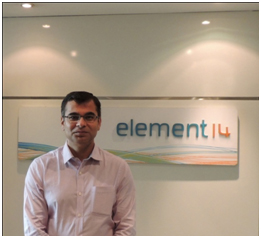
2016 ended with a dizzying number of new wearables covering everything from smartwatches, activity trackers and smart clothing to medical assistive devices and survival devices for first reponders. In 2017, we are already looking at more innovation in this rapidly evolving space and open doors filled with new opportunities. This year’s design trends are already taking shape. Following suite are some of the development platforms that designers are using to create innovative wearable tech devices.
Leveraging the ecosystem
To create an innovative environment for hardware and app developers alike, it has become increasingly important to provide not only a development platform, but an ecosystem that facilitates creativity and product differentiation. A response to this sentiment is the WaRP7 development platform.
The WaRP7 addresses everything plaguing the minds of wearable designers: a compact form-factor, on-board sensors, connectivity, including NFC, Bluetooth®, Bluetooth Smart and Wi-Fi, low power, and open source. But at the heart of the Warp7 is NXP’s power-efficient, i.MX 7Solo application processor, featuring a unique heterogeneous multicore architecture that enables low-power modes critical for most wearable designs, but also provides the processing power to drive a higher-level operating system and a rich user interface.
The advanced security features of the i.MX 7Solo processor provide hardware-enabled security features that enable secure e-commerce, digital rights management (DRM), information encryption, secure boot, and secure software downloads. The WaRP7 is flexible enough to offer all the advantages of traditional development tools yet its open-source design eliminates the hassles of licensing.
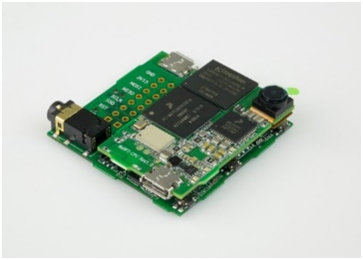
Technology and style merge – Should a wearable technology device be aesthetically pleasing? Market studies are clear on this point: most people take into account the style of a wearable device prior to purchasing. When compared to bulky, blocky wearables, customers buy fashionable wearable tech devices.
An example of a development platform that merges technology with style is MikroElektronica’s Hexiwear. It’s a sleek, wirelessly-enabled, low-power device packed with sensors. The Hexiwear hardware includes the low-power, high performance Kinetis K6x microcontroller based on ARM Cortex-M4 core; the Kinetis KW40Z multimode radio SoC, supporting BLE; a 6-axis accelerometer and magnetometer, a 3-axis gyroscope, an absolute digital pressure sensor; and an NXP single cell battery charger IC. Hexiwear is open-source and has its own application for Android and iOS, so a developer can connect the device to the cloud without any additional software development.
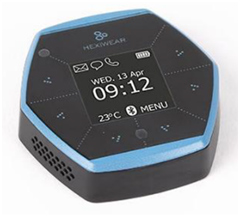
Component integration – A new generation of wearables, not limited to wrist-worn smartwatches, and driven by smart clothing development, sensor miniaturisation and component integration are opening doors to wearable undergarments, shoes, shirts, and even medical devices that can perform complex sensing functions.
An example of this trend towards more component integration is Maxim Integrated’s MAXREFDES73# GSR reference design. It’s a wrist-worn GSR measurement device that monitors both skin impedance and temperature. It integrates DAC and ADC signal chain components, a low-power microcontroller, external Bluetooth and Android apps, as well as firmware components. A high accuracy, 16-bit integrated analog front-end (AFE) along with low power consumption gives developers a highly-integrated reference design for rapid development.
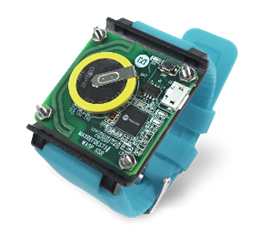
Use less power but need more power – Wearable fitness devices may last a couple of days on batteries, and smartwatches, even less. As wearables become more integrated into the ‘always connected’ lifestyle of its users, they will need to not only use less power, they will need more of it. Expect to continue to see ultra-low-power processors and sensors, and low-power wireless connectivity (Bluetooth LE) to solve half of the power equation. But the combination of high-energy density batteries, power harvesters, and wireless charging solutions will be used to extend uptime of this year’s wearable devices.
An example of a platform for the wireless charging of ultra-compact battery operated devices is the STEVAL-ISB038V1 by ST Microelectronics. It includes a transmitter and receiver boards, as well as a GUI for monitoring system behavior. It’s optimised for 1-watt wireless power transfer with a half-bridge topology on the transmitter side and tiny 11 mm and 20 mm coils on the receiver and transmitter sides, respectively. For power transfers up to 3 watts, the design can be modified by using larger coils and a full-bridge configuration on the transmitter.
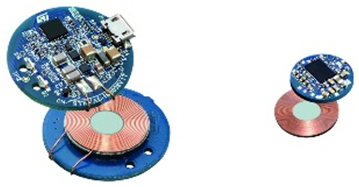
The cost factor – Besides function and fashion, a wearable designer needs to pay close attention to cost. Consumers still think wearables are too pricey. While it’s true that most new technology costs more than mature technology with broad market support, will the wearables market follow suit this year? Looks like it will be answered before 2018 rolls in.






